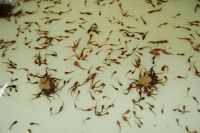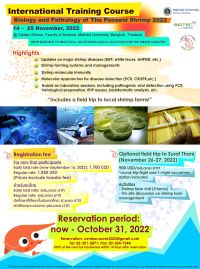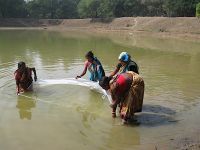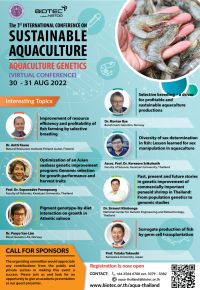In this issue:
Dynamics of small-scale aquaculture development in India: A review; Green water technology as an essential support to larval rearing of hilsa shad; Collection of freshwater molluscs and sale of meat by women in Purba Medinipur, West Bengal, India; A success story of ornamental fish farming as a tool for alternative livelihood of tribal women in Keonjhar District, Odisha, India; Recent trends in seed production of stinging catfish, Heteropneustes fossilis, in India; NACA Newsletter.
Hatchery production of stinging catfish (Heteropneustes fossilis) seed is increasing as it is a good fish species favoured by consumers due to its high protein and lower fat content. Stinging catfish naturally breeds in the monsoon season, and is found gravid in the wild during July-September. In captivity it can be successfully produced using either induced or natural breeding techniques. This article summarises what is known about stinging catfish biology, and methods for its captive breeding, rearing of larvae and fry, feeding strategies and health concerns, to aid production of seed of this valuable catfish.
Highlights of the course include: Updates on major shrimp diseases including EHP, white faeces, and AHPND; shrimp farming systems and management; Shrimp molecular immunity; molecular approaches for disease detection including PCR and CRISPR; hands-on laboratory sessions, including pathogenic viral detection using PCR, histological preparations, EHP assays and bioinformatic analysis, and an optional field trip to local shrimp farms in Surat Thani.
The course will be held at Centex Shrimp, Faculty of Science, Mahidol University in Bangkok, Thailand. This is a paid training course. Reservations will close on 31 October. For more information, please download the flyer.
In Odisha, India, ornamental fish farming, culture and seed production are being utilised by self help groups to provide livelihoods for poor people in rural communities. The objective of self help groups is to sustainably increase the income of poor families to bring them above the poverty line. This is being achieved through a process of social mobilisation, training and capacity building, and provision of some necessary facilities. This article documents the evolution of ornamental fish farming by the Pragati Self Help Group in Bhatunia Village.
The conference will be held in virtual format. Please download the flyer below or visit the conference website.
Topics include: Improvement of resource efficiency and profitability of fish farming by selective breeding; Optimisation of an Asian seabass genetic improvement program: Genomic selection for growth performance and harvest traits; Pigment genotype-by-diet interaction on growth in Atlantic salmon; Selective breeding - a driver for profitable and sustainable aquaculture productions; Diversity of sex determination in fish: Lesson learned for sex manipulation in aquaculture; Past, present and future stories in genetic improvement of commercially important penaeid shrimp in Thailand: From population genetics to genomic studies; Surrogate production of fish by germ cell transplantation.




